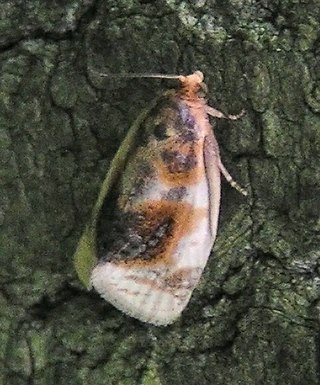
Clepsis melaleucana, the black-patched clepsis, is a moth of the family Tortricidae. The species was first described by Francis Walker in 1863. It is found in North America from Alberta to Newfoundland, south to North Carolina and Missouri.

Arsacia is a monotypic moth genus of the family Noctuidae. Its only species is Arsacia rectalis. Both the genus and species were described by Francis Walker, the genus in 1866 and the species in 1863. It is found from the Indo-Australian tropics of India, Sri Lanka to Queensland and the Solomon Islands.

Psimada is a monotypic moth genus of the family Noctuidae. Its only species, Psimada quadripennis, is found in the Indian subregion, southern China, Taiwan, Myanmar, Thailand, Sri Lanka, the Andaman Islands, Sundaland, Sulawesi and Seram. Both the genus and species were first described by Francis Walker in 1858.
Aquita acontioides is an Asian member of the family Nolidae.

Chiasmia emersaria is a moth of the family Geometridae. The species was first described by Francis Walker in 1861. It is found in India, Nepal, northern Thailand, China, Sri Lanka, Japan and the Ryukyu Islands.

Planotortrix excessana, the greenheaded leafroller, is a moth of the family Tortricidae. It is native to New Zealand and is an introduced species in Hawaii. It is extremely variable in appearance and feeds on many native and introduced species. It is regarded as a pest of some agricultural and forestry crops.

Targalla subocellata is a moth in the family Euteliidae first described by Francis Walker in 1863. It is found in Taiwan, the north-eastern part of the Himalayas, Sundaland, the Philippines, Sulawesi, the southern Moluccas, New Guinea and Queensland.

Scirpophaga incertulas, the yellow stem borer or rice yellow stem borer, is a species of moth of the family Crambidae. It was described by Francis Walker in 1863. It is found in Afghanistan, Nepal, north-eastern India, Sri Lanka, Bangladesh, Myanmar, Vietnam, Thailand, Malaysia, Singapore, Sumatra, Java, Borneo, Sumba, Sulawesi, the Philippines, Taiwan, China and Japan.
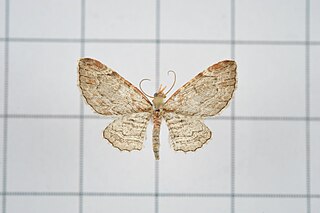
Eupithecia costalis is a moth in the family Geometridae first described by Francis Walker in 1863. It is widespread in the tropical and subtropical lowland regions of east and south-east Asia, from Taiwan to India, Sri Lanka Borneo, Borneo, to Hong Kong.
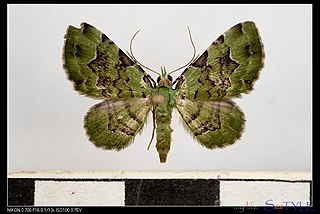
Ardonis filicata is a moth in the family Geometridae first described by Charles Swinhoe in 1892. It is found in the north-eastern Himalayas and Borneo and Sulawesi.
Ziridava xylinaria, the indistinct carpet, is a moth in the family Geometridae. The species was first described by Francis Walker in 1863. It is found in Sri Lanka, India, Hong Kong and on Peninsular Malaysia, Borneo, Java and possibly the Philippines and Sulawesi.

Hypomecis separata is a species of moth of the family Geometridae. It was first described by Francis Walker in 1863. It is found in Sri Lanka, India, Java and Borneo.

Risoba repugnans is a species of moth of the family Nolidae first described by Francis Walker in 1865.
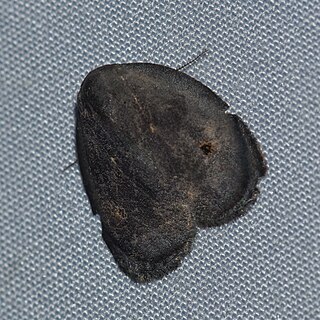
Hemonia orbiferana is a moth of the family Erebidae. It was described by Francis Walker in 1863. It is found in Sri Lanka, India, Myanmar, Singapore, as well as on Borneo and Peninsular Malaysia.
Trischalis absconditana is a moth in the family Erebidae. It was described by Francis Walker in 1863. It is found in Assam in India and in Sri Lanka.
Surattha invectalis is a moth in the family Crambidae. It was described by Francis Walker in 1863. It is found in Sri Lanka, India, Java, Indonesia, Myanmar, and Kenya.
Compsolechia suffectella is a moth of the family Gelechiidae. It was described by Francis Walker in 1864. It is found in Mexico, Panama, Colombia and the Brazilian states of Amazonas and Espírito Santo.
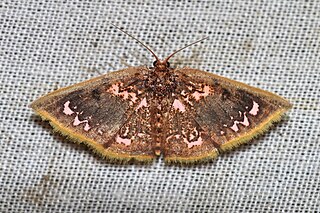
Chrysocraspeda abhadraca is a species of moth in the family Geometridae described by Francis Walker in 1861. It is found in Indian subregion including India and Sri Lanka, Peninsular Malaysia, Sumatra and Borneo.

Pseudogyrtona perversa is a moth of the family Noctuidae first described by Francis Walker in 1862. It is found in Sri Lanka, Borneo and Australia.

Rivula aequalis is a moth of the family Erebidae first described by Francis Walker in 1863. It is found in Sri Lanka, the Indian subregion, Japan, Sundaland, the Philippines and Sulawesi.














